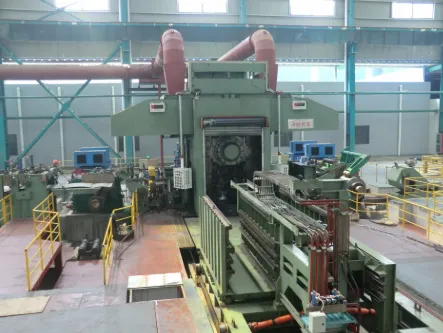
Reversible Cold Rolling Technology in Stainless Steel Production
The fundamental working principle of a reversible cold rolling mill involves passing the strip back and forth between the work rolls, with each pass applying controlled reduction. Between passes, the strip is wound onto recoilers at both ends of the mill stand, allowing for continuous processing without the need for multiple stands. This configuration provides exceptional flexibility in scheduling different steel grades and dimensions, a critical factor in stainless steel production where product mix variability is high.

Technical Advantages of Reversible Cold Rolling Mills for Stainless Steel
The reversing cold rolling mill offers several distinct technical advantages when processing stainless steel compared to alternative rolling methods. One significant benefit is the exceptional thickness control achievable through the mill's configuration. The single-stand design of a cold reversing mill allows for more precise gauge control across the strip width and along its length, critical for maintaining consistency in high-value stainless steel products. Modern mills incorporate automatic gauge control (AGC) systems that continuously monitor and adjust roll gaps during both forward and reverse passes.
Another advantage lies in the mill's ability to handle a wide range of strip widths and thicknesses without requiring extensive setup changes. A reversing rolling mill can efficiently process both narrow strips for precision applications and wide coils for architectural panels, simply by adjusting side guides and roll bending systems. This versatility significantly reduces changeover times between different product specifications, improving overall equipment effectiveness in stainless steel production.
The reversible cold rolling mill also demonstrates superior flatness control capabilities, essential for stainless steel products. Through advanced roll bending and shifting systems, combined with selective cooling technologies, the mill can compensate for natural crown variations and maintain consistent flatness across the entire strip. This capability becomes increasingly important when rolling wide stainless steel strips where flatness deviations can lead to significant quality issues in downstream processing.
Quality Control Considerations in Stainless Steel Reversing Mills
Maintaining consistent quality in a reversing cold rolling mill processing stainless steel requires comprehensive control systems and rigorous operating procedures. One critical aspect is the implementation of inline measurement systems that monitor key parameters during each pass. Modern cold reversing mills are equipped with advanced sensors that continuously measure strip thickness, width, flatness, and surface quality, allowing for real-time adjustments to maintain product specifications.
The reversing rolling mill environment also demands strict control of rolling oil filtration and temperature. Contaminants in rolling oil can lead to surface defects that are particularly problematic for stainless steel products. High-efficiency filtration systems maintaining oil cleanliness to NAS 6 standards or better have become standard in modern reversible cold rolling mills dedicated to stainless steel production.
Another quality consideration is the management of residual stresses in the rolled strip. The nature of reversing cold rolling mill operations, with multiple passes and direction changes, can introduce complex stress patterns in the material. Advanced tension control systems and optimized pass schedules are employed to minimize these effects and ensure the rolled stainless steel maintains optimal flatness and stability during subsequent processing or use.
The Continuing Importance of Cold Reversing Mills in Stainless Steel Production
The reversing cold rolling mill remains a vital technology in stainless steel manufacturing, offering unmatched flexibility and quality control for producing high-value stainless products. While the cold reversing mill faces unique challenges in processing these demanding materials, ongoing technological advancements continue to enhance its capabilities and efficiency.
The ability of a reversing rolling mill to handle diverse stainless steel grades, achieve precise thickness tolerances, and produce superior surface finishes ensures its continued relevance in an increasingly competitive market. As stainless steel applications expand into new industries and product forms, the reversible cold rolling mill will undoubtedly evolve to meet these new demands through continued innovation in automation, control systems, and rolling technology.
For stainless steel producers, investing in advanced reversing cold rolling mill technology represents a strategic decision to maintain competitiveness in producing high-quality, value-added products. The mill's unique combination of flexibility, precision, and quality control makes it an indispensable tool in the stainless steel industry's ongoing pursuit of excellence.
-
YWLX’s 1450mm Six-Hi Reversing Mill Goes Live in BangladeshNewsOct.28,2025
-
Adjusting Roll Gap in 6Hi Reversing Cold Rolling Mill for Thin StripNewsNov.13,2025
-
Quality Control Standards for Automatic Gauge Control in Strip RollingNewsNov.13,2025
-
Effect of Skin Pass Rolling on Metal DuctilityNewsNov.13,2025
-
Key Components of a Modern TempermillNewsNov.13,2025
-
Common Wear Patterns of Work Roll in Tandem Cold Mill OperationsNewsNov.13,2025
-
Revolutionary Skin Pass Rolling Technology for Enhanced Steel QualityNewsNov.04,2025










